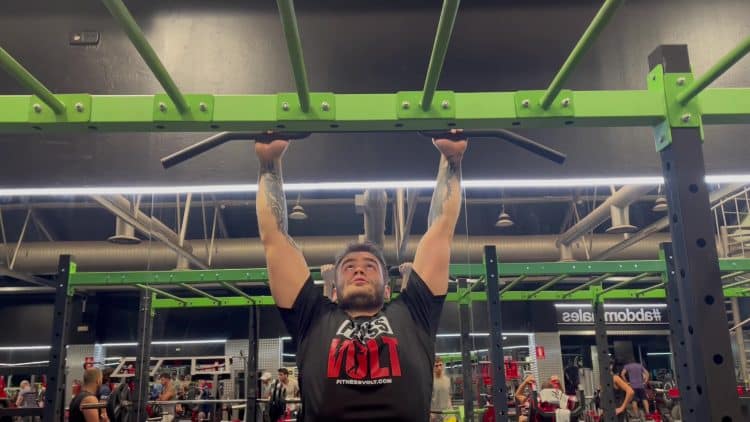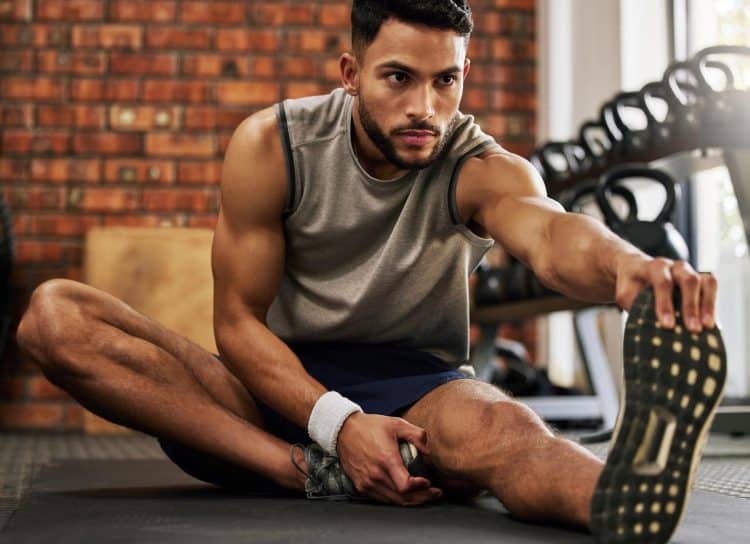Nine out of 10 gym-goers will tell you that cardio training is the most boring part of their fitness routine. Spending 30 to 45 minutes daily on a treadmill, stairmill, elliptical, or rower can get monotonous very quickly. Worse, long steady-state cardio training can lead to muscle and joint stiffness and overuse injuries.
This is also one of the biggest reasons why many people quit their transformation journey before achieving their objectives.
As a personal trainer with almost two decades of experience, it is my duty to find ways to make exercise more fun and engaging for my clients, and I feel I might have found exactly the way to do it — animal movements.
But what are animal movements, you ask?
Well, it’s pretty obvious. These exercises involve mimicking animal movement patterns. For example, crawling like a bear, jumping like a frog, or walking like a crab. It might sound silly, but your opinions about it will change as soon as you read about the results of my 30-day challenge of training these animal movements.
What are Animal Movements?

Experts believe animal (primal) movements follow the blueprint for how our bodies were originally designed to move.
Level Up Your Fitness: Join our 💪 strong community in Fitness Volt Newsletter. Get daily inspiration, expert-backed workouts, nutrition tips, the latest in strength sports, and the support you need to reach your goals. Subscribe for free!
So, what does that mean for people who want to add animal movements to their training regimen?
You must ditch the mind-numbing treadmill and embrace a workout involving compound movements that target multiple muscle groups, improve overall mobility and functionality, and are as fun as they are challenging.
Make no mistake, animal movements aren’t a fitness fad. A study published in the Frontiers in Sports and Active Living journal concluded that quadrupedal movement training using animal flow meets the American College of Sports Medicine’s (ACSM) criteria for moderate-intensity physical activity and should be considered a viable alternative to help meet physical activity guidelines. (1)
Types of Animal Movements
Before we delve further into animal movements, let’s go over the basics so you have a clear understanding. Here are the exercises you should know about:
- Crawling: It involves walking on all fours, examples include bear crawls and crab walks. These exercises help build core strength and shoulder stability.
- Climbing: Think scaling walls or using monkey bars. CrossFit events like pegboard and wall walks are a good example of this. They build grip and upper body strength simultaneously.
- Jumping: These are among the most basic animal movements. They involve unleashing your inner child with frog jumps and broad jumps. Plyometric exercises like these are incredibly effective for boosting power generation and athleticism.
- Balancing: Next up are balancing exercises like single-leg balances or even handstands. Balancing exercises are excellent for improving proprioception (your body’s awareness of itself in space).
- Swinging: This gels well with climbing and involves swinging from elevated surfaces like a pull-up or monkey bar. These are important for building a sculpted back and shoulders and decompressing the spine, which can help improve posture.
Animal movements don’t end here. You are only limited by your own imagination. You can also include movements like rolling, twisting, and several other primal movements. Let nature and the wild be your inspiration.
As you can imagine, there can be countless combinations and permutations of animal movement-focused workouts. The best thing about this is that you can adjust them according to your current fitness levels and training objectives.
Benefits of Animal Movements That Go Beyond The Gym
Why would anyone do anything else if gym cardio training was so good? Animal movements focus on holistic health and well-being. Here is a lowdown on its benefits:
Strength
Exercises like climbing, swinging, and crawling are excellent for building functional strength that can boost your performance in daily activities.
Flexibility
Since animal movements are about real-world performance, these are focused on improving your mobility and pliability. These exercises prioritize moving your muscles through their full range of motion and developing strength in the most vulnerable positions.
A randomized controlled trial published in the Journal of Strength and Conditioning Research found that animal training can improve functional movement abilities and the range of motion of the joints, making it a viable alternative form of training to improve whole-body stabilization and flexibility. (2)
Coordination & Balance
Exercises like single-leg balances, monkey bars, and handstands require decent coordination. Plus, as you gain more experience, you’ll graduate to handstand walks, which require a whole new level of skills. These exercises also sharpen your mental focus and body connection.
These exercises also activate your stabilizer muscles, which are otherwise neglected in traditional in-gym cardio training. A stronger core can translate to better performance in other compound movements like squats, bench presses, and deadlifts.
Cardiovascular Fitness
While replacing cardiovascular training with animal movements, you must ensure that you program them as high-intensity workouts that spike your heart rate and help you torch a significant amount of calories.
Keep the rest duration between exercises short to challenge yourself and improve your work capacity.
My 30-Day Animal Movement Challenge
People always give the analogy of being a ‘beast’ in the gym, and I took this to heart with this 30-day animal movements challenge. However, I kept things simple for this routine. Below is my weekly training schedule:
- Monday: Strength Focus
- Tuesday: Cardio Burst
- Wednesday: Mobility Flow
- Thursday: Strength Focus
- Friday: Active Recovery (light animal movements, stretching, yoga)
- Saturday & Sunday: Rest or Active Recovery
This training regime ensured I focused on each aspect of my fitness — strength, cardio fitness, and mobility. I also added an active recovery day as I wanted to work on my mobility and flexibility.
Level Up Your Fitness: Join our 💪 strong community in Fitness Volt Newsletter. Get daily inspiration, expert-backed workouts, nutrition tips, the latest in strength sports, and the support you need to reach your goals. Subscribe for free!
Each of my training sessions lasted 45 to 60 minutes. The warm-up and cool-down routine took 10 to 15 minutes combined, whereas the actual workout lasted 35 to 45 minutes.
30-Day Animal Movement Daily Exercise Breakdown
Check out my complete training regime:
Monday & Thursday (Strength):
Here is my strength-focus animal movement routine. Focus on holding the fully extended position for at least a second and use additional resistance via ankle weight or weighted vests.
| Exercise | Sets | Reps/Time | Rest |
| Bear crawls | 3 | 20-30 yards | 60 sec. |
| Crab walks | 3 | 20-30 yards | 60 sec. |
| Frog squats | 3 | 10-15 reps | 30 sec. |
| Ape reaches (each side) | 3 | 10-15 reps | 30 sec. |
| Lizard lunges (each side) | 3 | 10-15 reps | 30 sec. |
People prioritizing cardio or mobility training can swap the second strength training session according to their needs.
Tuesday (Cardio):
Be as explosive as possible during these exercises. However, make sure you are following a picture-perfect form.
| Exercise | Sets | Reps/Time | Rest |
| Animal flow combos (e.g., bear crawl to crab walk to ape reach) | 3-5 | 30-60 sec. | 30 sec. |
| Jumping jacks w/ animal movements (e.g., jumping jack to gorilla squat) | 3 | 20 reps | 30 sec. |
| Mountain climbers | 3 | 20-30 reps | 60 sec. |
Wednesday (Mobility):
Aim for deep stretches and hold the uncomfortable position for a few seconds to relieve muscle stiffness.
| Exercise | Sets | Reps/Time | Rest |
| World’s greatest stretch (each side) | 3 | 10-15 reps | 30 sec. |
| Scorpion reach (each side) | 3 | 10-15 reps | 30 sec. |
| Deep squat hold | 3 | 30-60 sec. | 60 sec. |
| Spinal twists (cat-cow pose) | 3 | 10-15 reps | 30 sec. |
I followed this training regime for four weeks. I employed the progressive overload principles to avoid plateaus and ensure consistent progress.
Week-By-Week Breakdown of the 30-Day Animal Movement Challenge
This month-long challenge required a lot of learning, changes, and adjustments. Below is the breakdown:
Week One
To be completely honest, most of the movements felt awkward in the beginning, and the learning curve was steep. I would spend several hours at home trying to drill the movement mechanics for better performance and results. The first week of training also left me mildly sore, especially in the hamstring (thank you, bear crawls).
Week Two
I noticed a significant improvement in my mobility in the second week. It was now much easier and more comfortable to get into certain positions and hold them. My overhead and thoracic spine mobility had never been better. Not to mention, animal movements are much more fun than running on a treadmill, which can help people stick to their training regime in the long term.
Week Three
While my joints and tendons responded early, my strength caught up in Week Three. I also experienced gains in my cardiovascular endurance and conditioning. The first two weeks of animal movement training left me exhausted, but not anymore.
Week Four
One of the biggest and most unexpected results of this 30-day animal movement challenge was its impact on my mind-muscle connection. I felt more connected to my muscles, and I could fire up the right muscles at the right time. This benefit has carried over to strength training, resulting in deeper mind-muscle connections and sharp muscle pumps.
The animal movements also improved my core strength, daily functionality, and physical performance.
Although this training program looked great on paper, I wasn’t expecting the kind of results it delivered. I highly recommend this 30-day animal workout challenge to anyone stuck in a rut and seeking something more exciting and effective.
Getting Started with Animal Movements
So, you’re ready to ditch the conventional gym cardio training and embrace animal movements? I love that. In this section, I’ll help you get started.
Start Slow and Steady
Beginners should allow their bodies time to adapt to the unfamiliar movements and focus on easing into them. Begin with a shorter session and extend the duration as you gain more experience.
Find a Guide
Animal movements can be wild (puns intended). However, a gym trainer can help you navigate the wilderness and master proper form and technique. This will not only improve your results but also limit injury risk.
Prioritize Form
Since most of these exercises are bodyweight, many people try to rush through them. Remember, the quality of reps triumphs over quantity.
Listen To Your Body
Pay attention to your body’s signals. If your muscles feel too sore, consider taking a day off from exercise. Conversely, if you are bustling with energy, you should go full-send in your workout to ensure maximum results. Whatever you do, pushing through pain is never a good idea.
Conclusion
Every year, I take on a couple of fitness challenges to push my limits, explore new and interesting training methodologies, and avoid strength and muscle plateaus. When I embarked on the animal movement 30-day challenge, I had no idea what to expect from it since I had never done anything like it before. All I knew was I was going to give it everything I’ve had in each workout.
Truth be told, I’m very satisfied with the results. The animal movement exercises and workouts improved my mobility, cardiovascular conditioning, strength, and endurance and helped me feel energetic throughout the day.
Although I might not follow this routine forever, I will certainly take some aspects of this training style and incorporate it into my ab training, warm-up, and cool-down routines.
If you have any questions about animal movement training, drop them in the comments below, and I’ll be happy to help!
References:
- Buxton JD, Sherman SA, Sterrett MT, et al. A comparison of the energy demands of quadrupedal movement training to walking. Front Sports Act Living. 2022;4:992687. Published 2022 Oct 13. doi:10.3389/fspor.2022.992687
- Buxton, J. D., Prins, P. J., Miller, M. G., Moreno, A., Welton, G. L., Atwell, A. D., Talampas, T. R., & Elsey, G. E. (2022). The Effects of a Novel Quadrupedal Movement Training Program on Functional Movement, Range of Motion, Muscular Strength, and Endurance. Journal of strength and conditioning research, 36(8), 2186–2193. https://doi.org/10.1519/JSC.0000000000003818











